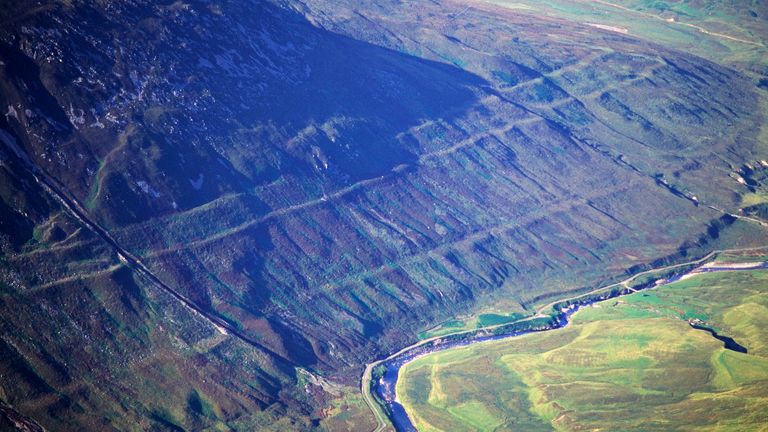Three Scottish sites have been included in a new list of internationally important geological locations.
The Parallel Roads of Glen Roy, the Rum Igneous Complex, and the Barrow Zones have been selected for the International Union of Geological Sciences’ second list of 100 geological heritage sites.
As with the first 100, these sites are deemed to be of high scientific value and are the world’s best demonstrations of geological features and processes.
“They are the sites of fabulous discoveries of the Earth and its history,” NatureScot explained.
The Parallel Roads of Glen Roy can be found within NatureScot’s Glen Roy National Nature Reserve.
It is home to a suite of glacial lake shorelines that informed the development of glacial theory in the 19th century.
Three shorelines, or ‘parallel roads’, are evidence that glaciers were once in an area where none exist today.
The Rum Igneous Complex is within NatureScot’s Rum National Nature Reserve.
It is regarded as the “internal plumbing” of one of Scotland’s most recently active (60-million-year-old) volcanoes in which chromium and the precious metal platinum accumulated in chambers of molten magma.
The Barrow Zones, in the Glen Esk area of the Scottish Highlands, is a series of rock layers that were once mud on an ancient ocean floor.
NatureScot said changes in the mineral content of rocks, up Glen Esk, shows that they experienced increasingly higher pressures and temperatures, in a north-westerly direction, “when plate tectonics brought the geological foundations of Scotland together around 470 million years ago”.
Dr Christina Wood, a NatureScot geomorphologist, said it was “fantastic” to see three Scottish sites making the list.
She added: “We’re particularly proud that both the Parallel Roads of Glen Roy and the Rum Igneous Complex are located on NatureScot’s national nature reserves.
“Glen Roy and neighbouring Glen Spean have stimulated geological debate from the early-19th century to the present day.
“Particular highlights are three shorelines, or parallel roads, visible along the flanks of Glen Roy at altitudes of 260m, 325m and 350m above sea level.
“The lakes that created the shorelines were dammed by glaciers as they advanced and retreated.
“The parallel roads provided convincing evidence for the former existence of glaciers in an area where none exist today, thus supporting [Louis] Agassiz’s theory of continental glaciation during a geologically recent Ice Age.”
The International Union of Geological Sciences (IUGS) revealed its second 100 list during the 37th International Geological Congress in Busan, South Korea, on Tuesday.
Siccar Point in the Scottish Borders and Moine Thrust in the Highlands were recognised in the first 100 list in 2022.
The third 100 list is expected to be announced in 2026.
Dr Wood added: “It’s vital we protect and conserve these special places for future generations to learn from and enjoy and we hope that many more people will continue to explore and experience the wonders of Scotland’s truly magnificent geological heritage.”









